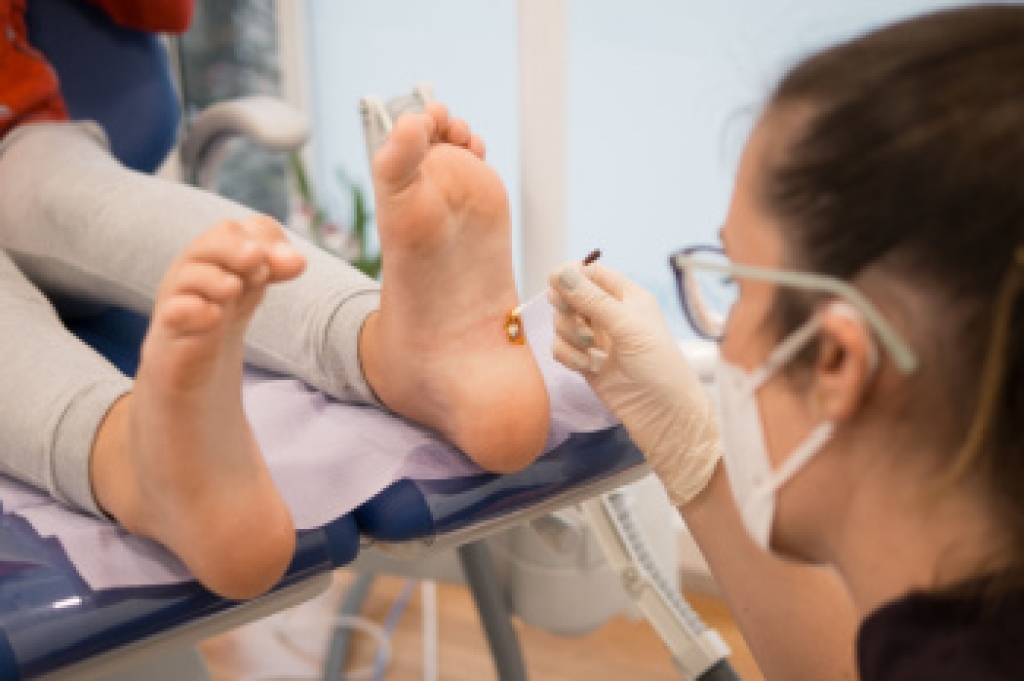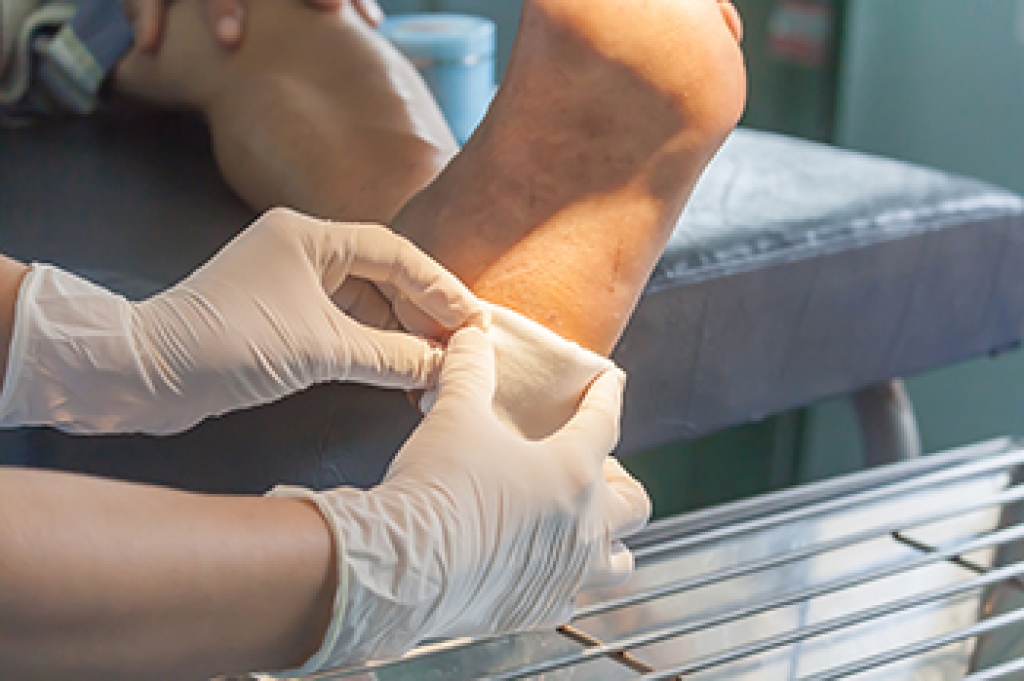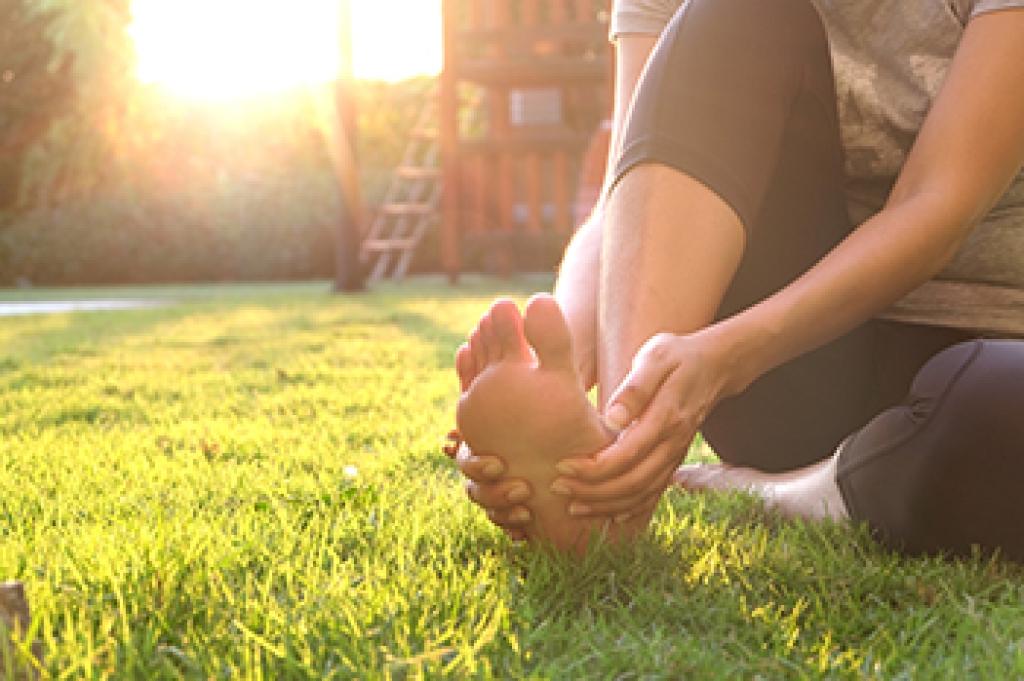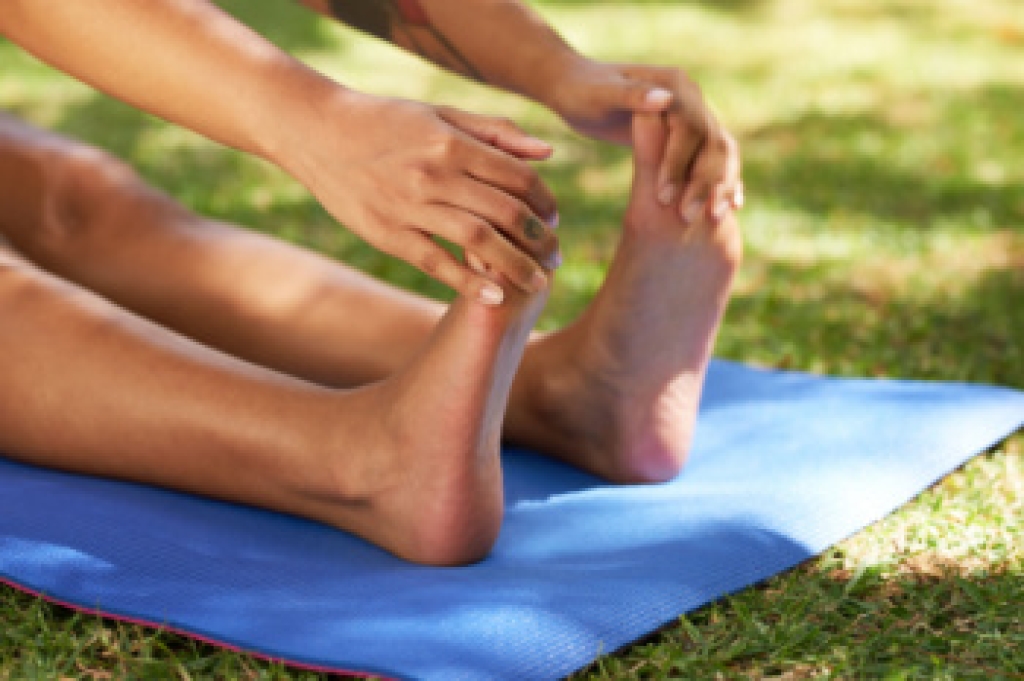Blog
Plantar Warts and When to Get Treatment

Plantar warts are small growths that appear on the soles of the feet, caused by the human papillomavirus, or HPV, entering through tiny cuts or breaks in the skin. They often develop on weight-bearing areas such as the heel or ball of the foot, causing discomfort or pain when standing or walking. Plantar warts may look like rough, grainy bumps with tiny black dots, which are clotted blood vessels. The skin around the wart can become thickened or callused, making it difficult to see the wart clearly. These warts can spread through direct contact or shared surfaces like locker rooms and showers. A podiatrist can diagnose plantar warts through a physical examination and may use specialized tools to distinguish them from corns or calluses. Treatment options include topical medications or minor procedures to remove the wart. If you are dealing with plantar warts it is suggested that you make an appointment with a podiatrist to safely and effectively treat the condition.
Plantar warts can be very uncomfortable. If you need your feet checked, contact Jennifer M. Kern, DPM from South Carolina. Our doctor will assist you with all of your foot and ankle needs.
About Plantar Warts
Plantar warts are the result of HPV, or human papillomavirus, getting into open wounds on the feet. They are mostly found on the heels or balls of the feet.
While plantar warts are generally harmless, those experiencing excessive pain or those suffering from diabetes or a compromised immune system require immediate medical care. Plantar warts are easily diagnosed, usually through scraping off a bit of rough skin or by getting a biopsy.
Symptoms
- Lesions on the bottom of your feet, usually rough and grainy
- Hard or thick callused spots
- Wart seeds, which are small clotted blood vessels that look like little black spots
- Pain, discomfort, or tenderness of your feet when walking or standing
Treatment
- Freezing
- Electric tool removal
- Laser Treatment
- Topical Creams (prescription only)
- Over-the-counter medications
To help prevent developing plantar warts, avoid walking barefoot over abrasive surfaces that can cause cuts or wounds for HPV to get into. Avoiding direct contact with other warts, as well as not picking or rubbing existing warts, can help prevent the further spread of plantar warts. However, if you think you have developed plantar warts, speak to your podiatrist. He or she can diagnose the warts on your feet and recommend the appropriate treatment options.
If you have any questions, please feel free to contact our office located in West Columbia, SC . We offer the newest diagnostic and treatment technologies for all your foot care needs.
What to Do if You Step On a Nail

Stepping on a nail can lead to a serious puncture wound, especially if the nail is rusty or contaminated. These types of injuries can drive bacteria deep into the foot, increasing the risk of infection, abscess, or even bone involvement. Symptoms include immediate sharp pain, bleeding, swelling, and difficulty walking. The area may feel tender and become increasingly painful, over time. If the wound becomes infected, you may also notice pus, fever, or red streaks spreading from the site. A podiatrist can assess the severity of the wound, clean and dress it properly, and determine if antibiotics or a tetanus shot are needed. In some cases, imaging may be used to rule out foreign material or bone injury. Prompt treatment reduces the risk of complications, especially for individuals with diabetes or poor circulation. It is suggested that you schedule an appointment with a podiatrist immediately after stepping on a nail to ensure proper wound care and healing.
Wound care is an important part in dealing with diabetes. If you have diabetes and a foot wound or would like more information about wound care for diabetics, consult with Jennifer M. Kern, DPM from South Carolina. Our doctor will assess your condition and provide you with quality foot and ankle treatment.
What Is Wound Care?
Wound care is the practice of taking proper care of a wound. This can range from the smallest to the largest of wounds. While everyone can benefit from proper wound care, it is much more important for diabetics. Diabetics often suffer from poor blood circulation which causes wounds to heal much slower than they would in a non-diabetic.
What Is the Importance of Wound Care?
While it may not seem apparent with small ulcers on the foot, for diabetics, any size ulcer can become infected. Diabetics often also suffer from neuropathy, or nerve loss. This means they might not even feel when they have an ulcer on their foot. If the wound becomes severely infected, amputation may be necessary. Therefore, it is of the upmost importance to properly care for any and all foot wounds.
How to Care for Wounds
The best way to care for foot wounds is to prevent them. For diabetics, this means daily inspections of the feet for any signs of abnormalities or ulcers. It is also recommended to see a podiatrist several times a year for a foot inspection. If you do have an ulcer, run the wound under water to clear dirt from the wound; then apply antibiotic ointment to the wound and cover with a bandage. Bandages should be changed daily and keeping pressure off the wound is smart. It is advised to see a podiatrist, who can keep an eye on it.
If you have any questions please contact our office located in West Columbia, SC . We offer the newest diagnostic and treatment technologies for all your foot and ankle needs.
Common Foot Problems

Many people experience common foot problems that can affect daily comfort and mobility. Athlete’s foot is a fungal infection causing itching, redness, and peeling, often treated with antifungal creams and keeping feet dry. Blisters result from friction or pressure, relieved by padding, protective footwear, and proper hygiene. Bunions are bony bumps at the base of the big toe caused by genetics or tight shoes, eased with orthotics, wider shoes, and sometimes surgery. Corns develop from repeated pressure and friction, relieved with cushioning, wearing proper footwear, and professional removal. A podiatrist can diagnose these conditions, provide targeted treatments, recommend footwear, and offer preventive strategies to protect foot health. If you have any type of foot or ankle pain, it is suggested that you consult a podiatrist who can offer effective treatment solutions.
Foot Pain
Foot pain can be extremely painful and debilitating. If you have a foot pain, consult with Jennifer M. Kern, DPM from South Carolina. Our doctor will assess your condition and provide you with quality foot and ankle treatment.
Causes
Foot pain is a very broad condition that could be caused by one or more ailments. The most common include:
- Bunions
- Hammertoes
- Plantar Fasciitis
- Bone Spurs
- Corns
- Tarsal Tunnel Syndrome
- Ingrown Toenails
- Arthritis (such as Gout, Rheumatoid, and Osteoarthritis)
- Flat Feet
- Injury (from stress fractures, broken toe, foot, ankle, Achilles tendon ruptures, and sprains)
- And more
Diagnosis
To figure out the cause of foot pain, podiatrists utilize several different methods. This can range from simple visual inspections and sensation tests to X-rays and MRI scans. Prior medical history, family medical history, and any recent physical traumatic events will all be taken into consideration for a proper diagnosis.
Treatment
Treatment depends upon the cause of the foot pain. Whether it is resting, staying off the foot, or having surgery; podiatrists have a number of treatment options available for foot pain.
If you have any questions, please feel free to contact our office located in West Columbia, SC . We offer the newest diagnostic and treatment technologies for all your foot care needs.
Gentle Foot Stretches to Keep You Moving Comfortably

Taking a few minutes each day to stretch your feet can improve flexibility, ease discomfort, and support overall mobility. One simple stretch is the toe pull, where you sit comfortably and gently pull your toes back toward your shin to release tension in the arch. Another helpful exercise is the towel stretch. This is done by placing a towel under the ball of your foot and slowly pulling it toward you while keeping your knee straight. A third option is the calf stretch, which involves leaning forward against a wall with one leg behind you, keeping your heel on the ground to lengthen the muscles that connect to the heel and foot. Regular stretching may reduce stiffness, improve circulation, and help prevent injury. If you are experiencing persistent foot pain, it is suggested that you visit a podiatrist for professional care and guidance.
Why Stretching Is Important for Your Feet
Stretching the feet is a great way to prevent injuries. If you have any concerns with your feet consult with Jennifer M. Kern, DPM from South Carolina. Our doctor will assess your condition and provide you with quality foot and ankle treatment.
Stretching the Feet
Stretching the muscles in the foot is an important part in any physical activity. Feet that are tight can lead to less flexibility and make you more prone to injury. One of the most common forms of foot pain, plantar fasciitis, can be stretched out to help ease the pain. Stretching can not only ease pain from plantar fasciitis but also prevent it as well. However, it is important to see a podiatrist first to determine if stretching is right for you. Podiatrists can also recommend other ways to stretch your feet. Once you know whether stretching is right for you, here are some excellent stretches you can do.
- Using a foam roller or any cylindrical object (a water bottle or soda can will do), roll the object under your foot back and forth. You should also exert pressure on the object. Be sure to do this to both feet for a minute. Do this exercise three times each.
- Similar to the previous exercise, take a ball, such as a tennis ball, and roll it under your foot while seated and exert pressure on it.
- Grab a resistance band or towel and take a seat. If you are using a towel, fold it length wise. Next put either one between the ball of your foot and heel and pull with both hands on each side towards you. Hold this for 15 seconds and then switch feet. Do this three times for each foot.
- Finally hold your big toe while crossing one leg over the other. Pull the toe towards you and hold for 15 seconds. Once again do this three times per foot.
It is best to go easy when first stretching your foot and work your way up. If your foot starts hurting, stop exercising to ice and rest the foot. It is advised that you then see a podiatrist for help.
If you have any questions please contact our office located in West Columbia, SC . We offer the newest diagnostic and treatment technologies for all your foot and ankle needs.




